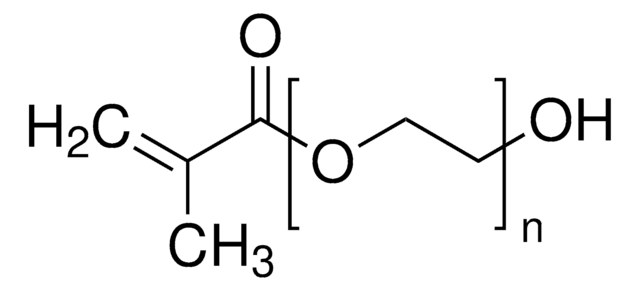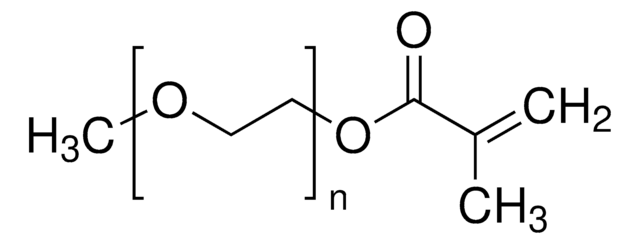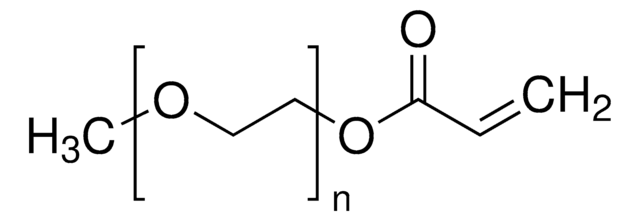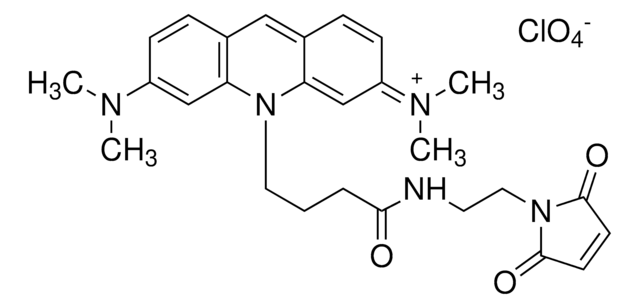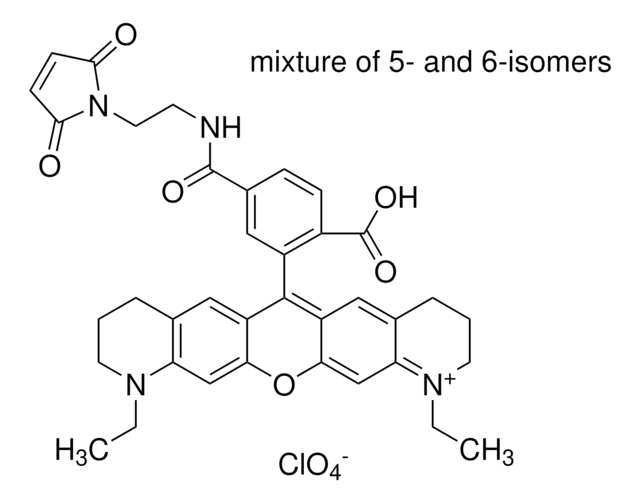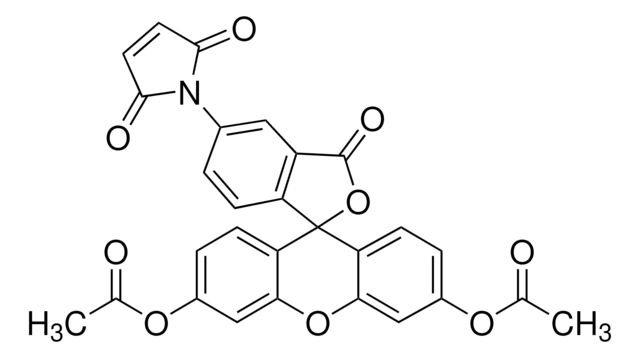447943
Poly(ethylene glycol) methyl ether methacrylate
average Mn 500, methacrylate, methoxy, 100 ppm MEHQ as inhibitor, 200 ppm BHT as inhibitor
Synonym(s):
Polyethylene glycol, Methoxy PEG methacrylate, Methoxy poly(ethylene glycol) monomethacrylate, Poly(ethylene glycol) monomethyl ether monomethacrylate
About This Item
Recommended Products
Product Name
Poly(ethylene glycol) methyl ether methacrylate, average Mn 500, contains 100 ppm MEHQ as inhibitor, 200 ppm BHT as inhibitor
mol wt
average Mn 500
contains
100 ppm MEHQ as inhibitor
200 ppm BHT as inhibitor
reaction suitability
reagent type: chemical modification reagent
reaction type: Polymerization Reactions
refractive index
n20/D 1.496
mp
−1-2 °C
density
1.08 g/mL at 25 °C
Ω-end
methacrylate
α-end
methoxy
polymer architecture
shape: linear
functionality: monofunctional
Looking for similar products? Visit Product Comparison Guide
Related Categories
1 of 4
This Item | 18507 | 46939 | 76245 |
|---|---|---|---|
| fluorescence λex 500 nm; λem 524 nm in 0.1 M phosphate pH 7.0 | fluorescence λex 563 nm; λem 592 nm in 0.1 M phosphate pH 7.0 | fluorescence λex 492 nm; λem 520 nm in 0.1 M phosphate pH 7.0 (after derivatization with 2-mercaptoethanol and after cleavage by esterase) | fluorescence - |
| form powder | form powder | form solid | form powder |
| storage temp. −20°C | storage temp. −20°C | storage temp. −20°C | storage temp. −20°C |
| product line BioReagent | product line BioReagent | product line - | product line BioReagent |
| manufacturer/tradename ATTO-TEC GmbH | manufacturer/tradename ATTO-TEC GmbH | manufacturer/tradename - | manufacturer/tradename ATTO-TEC GmbH |
General description
Signal Word
Warning
Hazard Statements
Precautionary Statements
Hazard Classifications
Eye Irrit. 2 - Skin Irrit. 2 - Skin Sens. 1 - STOT SE 3
Target Organs
Respiratory system
Storage Class Code
10 - Combustible liquids
WGK
WGK 1
Flash Point(F)
Not applicable
Flash Point(C)
Not applicable
Personal Protective Equipment
Choose from one of the most recent versions:
Already Own This Product?
Find documentation for the products that you have recently purchased in the Document Library.
Articles
Designing biomaterial scaffolds mimicking complex living tissue structures is crucial for tissue engineering and regenerative medicine advancements.
Our team of scientists has experience in all areas of research including Life Science, Material Science, Chemical Synthesis, Chromatography, Analytical and many others.
Contact Technical Service